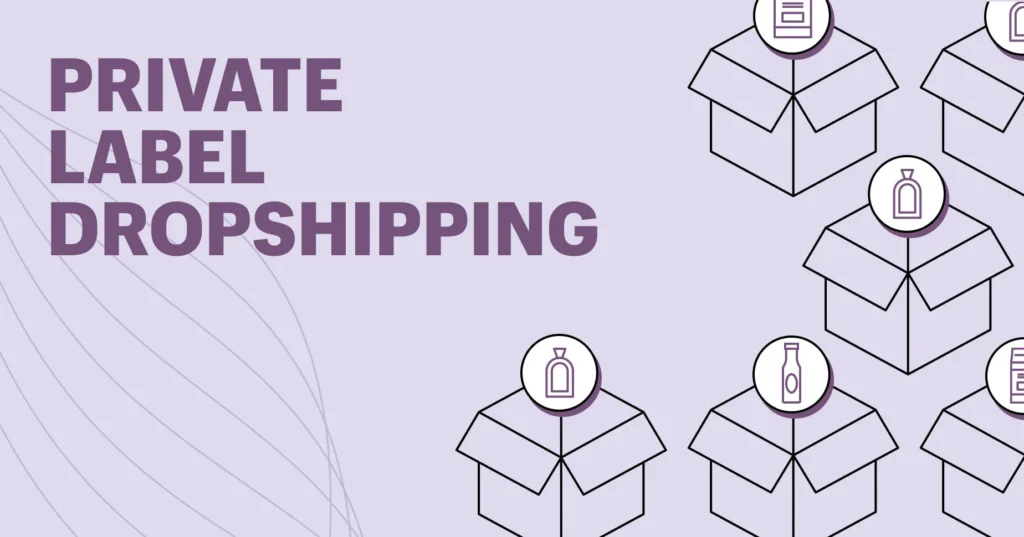Branded dropshipping can be termed one of the most powerful business models since you enjoy dropshipping and its unique advantage of having your own brand. Thus, as a more successful entrepreneur, you’ll have an opportunity to sell your products directly to customers without carrying any burden of keeping an inventory while making sure your brand stands out in the marketplace. This model focuses the mind on marketing and customer services while using a third-party supplier as a fulfillment process.
On this blog, I have written to cover what branded dropshipping is, its core components, comparison with private label dropshipping, and the steps to successfully start and run one’s own branded dropshipping store.
Table of Contents
ToggleWhat is Branded Dropshipping?

This is a sales fulfillment approach where you offer items under your own brand name without keeping any stock. The supplier handles production, storage, and directly delivers the products to the customer. Here is the catch; one fundamental difference between the traditional notion of dropshipping while your products arrive carrying the supplier’s brand but branded dropshipping opens possibilities to customize products and packaging with your logo, design, and branding.
What this really boils down to is a sense of building a unique identity for your store and products. It helps drive customer loyalty, establishes trust, and differentiates your offerings in the crowded marketplace. A highly scalable, low initial investment business model, branded dropshipping is attractive for an entrepreneur looking to carve out a unique product offering without all the risks of running an inventory-based business.
What is Private Label Dropshipping ?

Private label dropshipping is usually confused with branded dropshipping, but it’s a slight difference. Under private label dropshipping, it’s usually generic products whereby a third-party manufacturer has made the products. These are sold on your dropshipper brand name, therefore you. An external producer will produce the product, but you hold a degree of control over branding, packaging, and marketing.
Private labeling dropshipping offers access to suppliers for standard products which are applicable for your own branding and/ or labeling with your logo and/ or design. You are essentially taking branding onto products that are already being manufactured, which is usually cheaper, thus making it a less complicated procedure than manufacturing from scratch.
While branded dropshipping does require customization of product and packaging, you may add several other layers of brand customization, such as product designs available only to that brand, custom formulations (if applicable), and package designs. This has more control over the brand identity and even the customer experience.
How to Successfully Start and Run a Branded Dropshipping Store
Starting a branded dropshipping business is fun, but only if done with proper planning and execution. The following are the steps involved:
1. Niche Selection and Market Research
One of the most important concepts regarding making a successful branded dropshipping store is having the right niche. You want to target a demand that isn’t too saturated. Conduct market research and find products that have a solid customer base with low competition. Be able to identify customer pain points, preferences, and trends in creating a product offering for your target market.
Tools such as Google Trends, Amazon Best Sellers, or even Instagram and Pinterest can help in identifying popular niches. Then, think about the margins of profit, shipping prices, as well as your personal interest in that niche.
2. Identifying Suitable Suppliers
Once you establish your niche, your second step will be to find some suppliers who offer the products you want to sell. In this case, branded dropshipping, you are supposed to look for suppliers that allow customization including branding and packaging as well as design. Here are several platforms that can be used, including:
– AliExpress: One of the popular dropshipping platforms where you might see some branded products from suppliers.
– SaleHoo: A wholesale directory containing suppliers who can provide products for dropshipping with custom branding.
– Printful/Printify: Services catering specifically to print-on-demand products, enabling the full customization of designs and packaging.
– Spocket: Another popular platform for dropshipping, catering to US and EU suppliers, whose customers may not mind longer shipping times.
Ask the suppliers for customization options, MOQ (Minimum Order Quantities), price, as well as the experience of the supplier concerning branded dropshipping. It is essential to get to know them since quality and reliability depend on the relationship.
3. Building Your Online Store
Once you have your products and suppliers ready, building your branded online store is the next step. You should have an e-commerce platform that will allow you to make easy customization of your branding: Shopify, WooCommerce (for WordPress), or BigCommerce.
When setting your branded store:
– Develop product pages in high-resolution images and interesting descriptions, focusing on the unique aspects of your branded products.
– Pick a domain name that shows your brand and is memorable.
– Make sure to personalize your website’s appearance to fit your brand: this can be achieved through a logo, color scheme, and kind of font.
– Secure payment gateway to be used such as PayPal and Stripe for transactions.
– Ensure your website is mobile-friendly as most shoppers shop through their mobile phones.
4. Branding and Marketing
Branding can make all the difference for you in successful branded dropshipping. A solid brand will differentiate you from the other players and make people stick to your store. Here are some branding techniques you can apply:
– Create a Memorable Logo and Design: This will call for hiring a designer (or, as an alternative, using logo creation tools online), but your design should be simple and yet memorable.
– Tell a Story: Use your “About Us” page and product descriptions to tell the story behind your brand. Customers are more likely to buy from brands they feel connected to.
– Leverage social media: Instagram, Facebook, and TikTok are platforms that just about showcase products in front of a community interested in what your brand stands for. Display your products using high-quality images and videos that resonate well with your audience.
– Run Paid Ads: Make investments in paid advertisements on Facebook, Google, or Instagram that can drive traffic to the store. Start with a small budget and optimize based on performance.
– Influencer Marketing: Leverage influencers or micro-influencers who are willing to collaborate in your niche to increase brand visibility and gain trust among potential customers.
5. Concentrate on Customer Service
A long-term, highly successful brand depends on customer service. Because your branded dropshipping often involves direct communication with your customers–versus interacting with a third-party retailer–ensuring a seamless customer service experience will keep customers coming back and posting positive reviews.
– There should be several ways for your customers to reach you: email, chat, and phone support.
– Make sure your shipping and return policies are clear and easily accessible on your website.
– All customer questions are answered within a reasonable time and with a professional touch.
6. Monitor, Test and Optimize
Once the store is live, keeping control over the sales performance of your website and customer feedback will become rather straightforward. Use analytics, such as Google Analytics, to monitor traffic and conversion rates, plus A/B testing for elements on your website, as well as for ad campaigns, for optimizing towards best performance.
Constantly test new products, campaign strategies, and methods of engaging customers for competitive reasons and to make sure your brand is continually growing.
Conclusion
In addition to dropshipping, branded store opportunities enable you to set up and scale your very own brand without having to hold any inventory or shell out big sums of money upfront. Careful choice of a niche, with solid connections to reliable suppliers, an emphasis on branding and customer service, and proper marketing will see you create a distinguished branded dropshipping store in this saturated e-commerce market.
After all, building a brand is not a process that happens overnight, but with persistence and effort, your dropshipping store will slowly gain wealth. Mastering the subtleties of branded dropshipping and working on a strong, memorable brand will position you for long-term success.












Rahul M.
B2B Service Provider